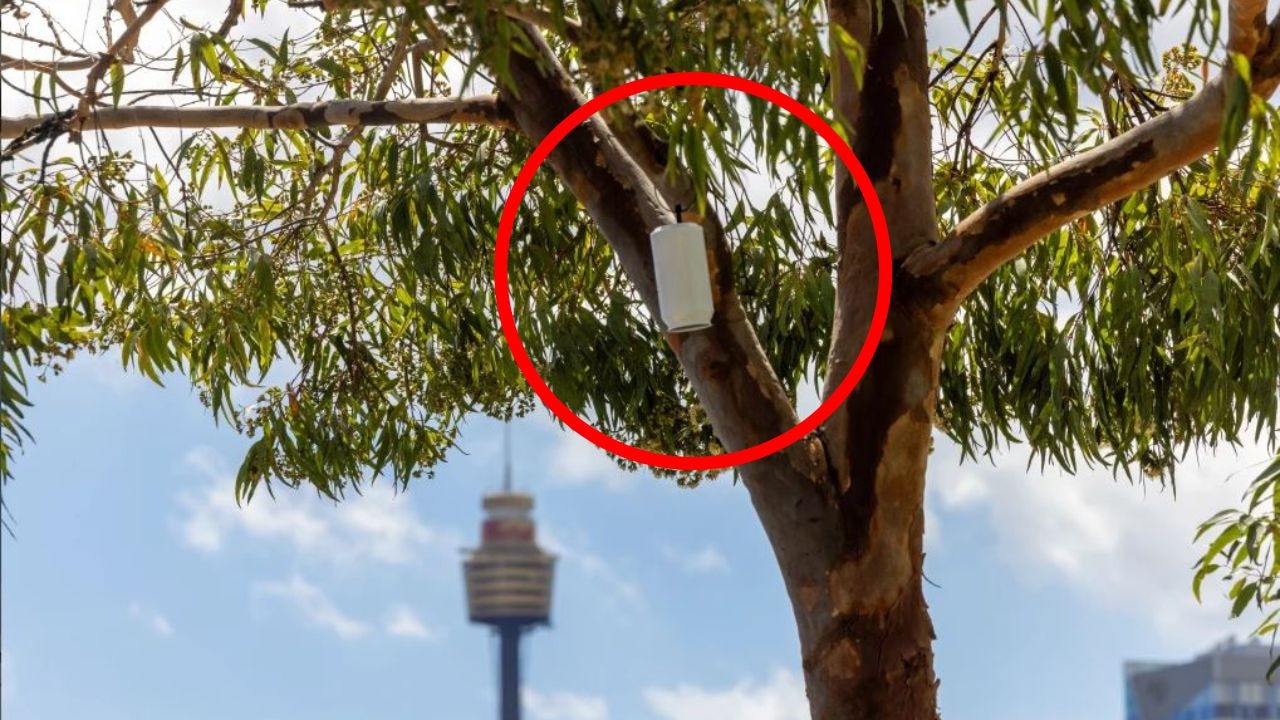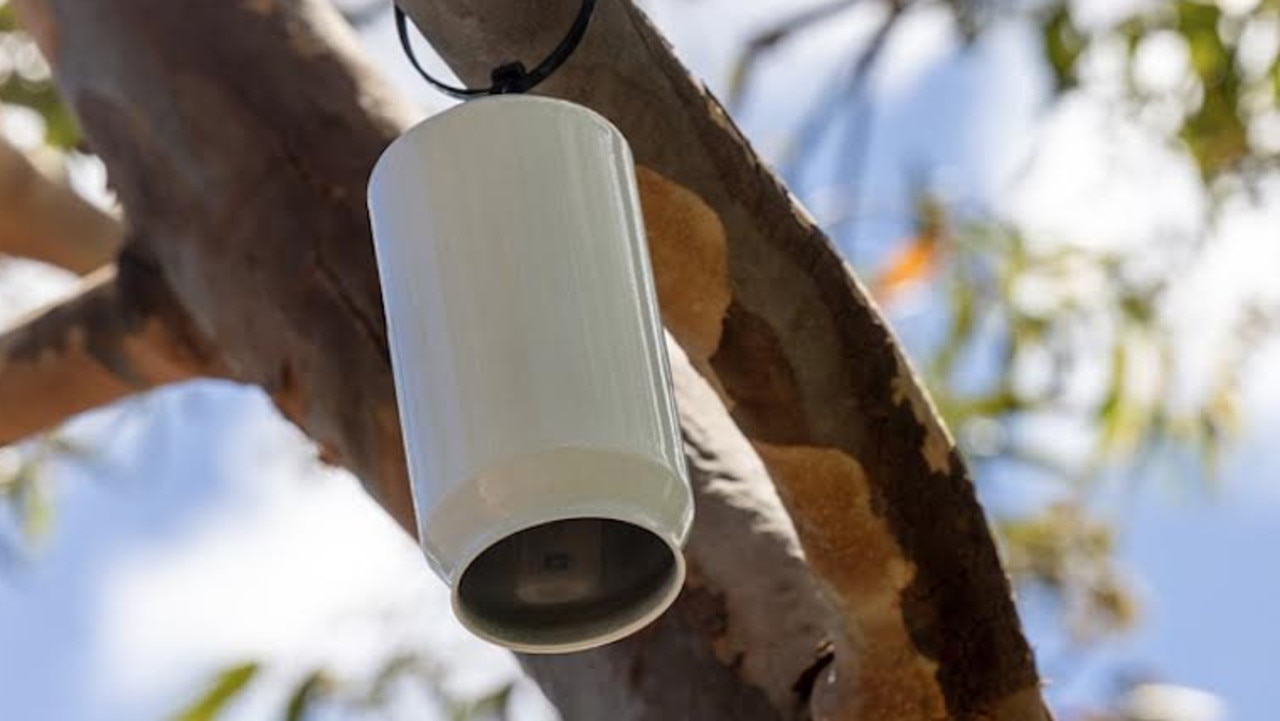Unusual item spotted in Sydney trees
A slew of unusual items have been spotted in trees by eagle-eyed passersby and their purpose could be life-changing for locals.
In the heart of Sydney’s CBD, eagle-eyed residents have spotted an unusual sight – 200 small white cans hanging from trees.
These bespoke temperature gauges are part of a study being conducted by the City of Sydney local authority, in partnership with Western Sydney University, to gauge the impact of heat on the city throughout the summer months.
It marks the first time the City of Sydney council area has been mapped in this way and will also provide valuable insights into how trees and parks contribute to temperature regulation.

Sydney has experienced record heat in the last five years, with Penrith reaching nearly 50 degrees in 2020.
Without emission cuts and as climate change worsens, temperatures could rise from 26.4 to 29 degrees by 2100, akin to climates in Port Moresby, Papua New Guinea.
Placed in trees, near roads, and buildings, these loggers will record temperatures every 10 minutes, generating over three million data points until March 2024.
Of these, 150 loggers will measure air temperature, while another 50 will monitor air temperature, relative humidity and gauge the wet-bulb temperature – providing insights into how hot it truly feels.
Speaking about the initiative, Sydney Lord Mayor Clover Moore said Australia was in a “climate emergency” and drastic action needed to be taken.
“This year is on track to be the hottest Australia has ever experienced,” she said.
“Our climate is trending warmer and the weather is becoming more extreme, so we must prepare and adapt.”
Ms Moore said the temperature gauges would identify “microclimates” and help the council understand where it could concentrate the most appropriate heat adaptation actions.

Dr Sebastian Pfautsch, an associate professor specialising in urban planning at Western Sydney University and the lead researcher for the project, said a benchmarking process for assessing the impacts of heat within the city was crucial.
“Without a refined understanding of the urban microclimate, its hotspots and cool zones, workers and local populations are left defenceless when extreme heat strikes. The question is not if the city centre will ever see 45°C, but rather how well the city is prepared to care for its people when the mercury hits new records.”
Dr Pfautsch said he suspects Moore Park and Allianz Stadium will be among the hottest areas in the city because they have large unshaded car parks and canopy cover is low.
Alexandria, Woolloomooloo, Waterloo, Glebe and Redfern may also be among those that feel the heat more, but he said the data would provide a clearer picture.
“Heat kills people and, with climate projections for the coming decades all pointing towards more summer heat and heatwaves, it is necessary to use all means available to keep the city and its population cool,” he said.






